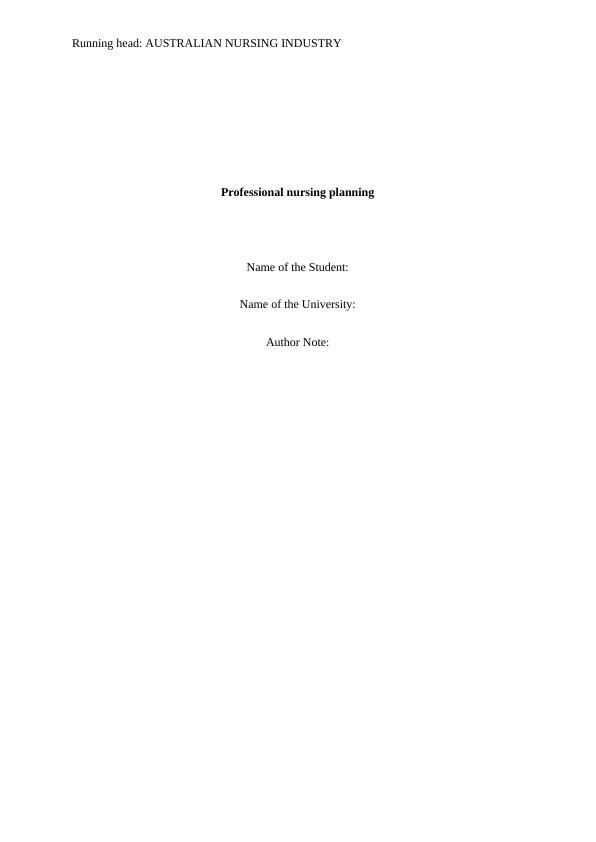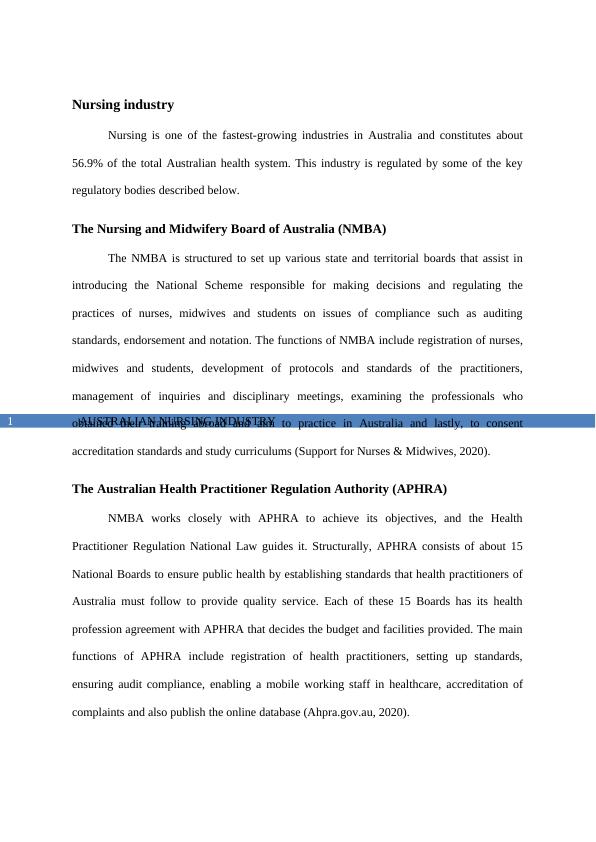Professional Nursing Planning | Australian Nursing Industry
Describe the structure, role and function of key regulatory bodies related to nursing in Australia and the skills, qualities, attitudes or knowledge required to be successful in nursing. Reflect on personal strengths and weaknesses related to the nursing profession.
6 Pages1393 Words19 Views
Added on 2022-08-12
Professional Nursing Planning | Australian Nursing Industry
Describe the structure, role and function of key regulatory bodies related to nursing in Australia and the skills, qualities, attitudes or knowledge required to be successful in nursing. Reflect on personal strengths and weaknesses related to the nursing profession.
Added on 2022-08-12
ShareRelated Documents
End of preview
Want to access all the pages? Upload your documents or become a member.
The Nursing Industry in Australia
|8
|1568
|15
Nursing and Stress Management l Assignment
|8
|1974
|18
Australian Nursing Industry
|7
|1825
|15
Australian Nursing Industry Analysis 2022
|11
|1911
|24
HLTENN001 Practise Nursing Within The Australian Health
|8
|2530
|51
Role of Nursing and Midwifery Board of Australia and Australian Nursing and Midwifery Federation
|6
|1309
|63



